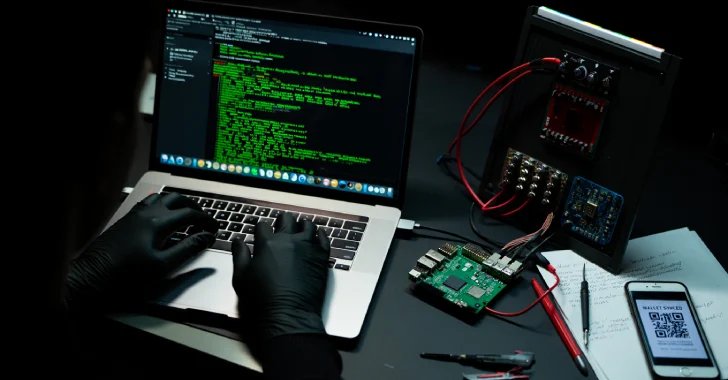Top Highlights
Here are the key points distilled from the article:
-
Evolving Malware Tactics: Modern malware is no longer just malicious; it’s becoming more sophisticated by mimicking legitimate developer tools and leveraging AI-generated code, making detection challenging.
-
High-level Cyber Attacks: The article highlights several advanced persistent threats, including Russian cyberspy group Secret Blizzard exploiting ISPs for espionage and Hafnium hackers linked to multiple patents for invasive technologies.
-
Emerging Vulnerabilities: Numerous security flaws, such as the critical ones found in SonicWall SSL VPN and the Alone WordPress Theme, have become active attack vectors, emphasizing the urgency for timely patching and awareness.
- Increased Attack Sophistication: A report indicates that a significant percentage (32%) of exploited flaws this year have been zero-day or one-day vulnerabilities, illustrating that attackers are quickly adapting to newly discovered security weaknesses.
The Issue
In an alarming escalation of cyber threats, a sophisticated attack attributed to a Russian advanced persistent threat (APT) group known as Secret Blizzard has targeted foreign embassies in Moscow. By leveraging local Internet Service Providers (ISPs) to conduct adversary-in-the-middle (AiTM) attacks, this group deploys the ApolloShadow malware directly to diplomats’ devices, potentially undermining international relations and intelligence. The method used suggests collusion between the APT and domestic telecom companies, exploiting their investigative systems to facilitate espionage without immediate detection.
Meanwhile, a comprehensive analysis by cybersecurity experts reveals that modern malware is increasingly designed to mimic legitimate developer tools, employing social engineering tactics that make malicious code appear trustworthy. This shift indicates not only an evolution in attack methodologies but also highlights the need for heightened vigilance among organizations, as yesterday’s defensive strategies may no longer suffice in mitigating today’s complex and automated threats. Reporting these developments, Ravie Lakshmanan of Hacking News emphasizes the urgency for businesses and security professionals to adapt to this rapidly evolving landscape.
What’s at Stake?
In today’s intricate digital landscape, the emergence of sophisticated malware, such as the adversary-in-the-middle (AiTM) attacks facilitated by groups like Secret Blizzard, poses profound risks not only to targeted entities but to the entire ecosystem of businesses and organizations interconnected through shared networks and services. As malware increasingly masquerades as legitimate tools, it can compromise trust and erode confidence among users and partners, resulting in potential disruptions across industries. Any breach within one organization can precipitate a domino effect, manifesting as data leaks, financial losses, or operational downtimes in others. Moreover, the exploitation of vulnerabilities in widely used platforms can lead to cascading failures; for instance, if software utilized by multiple businesses falls prey to a zero-day exploit, this could result in widespread operational paralysis. Therefore, the ramifications extend beyond the immediate victim, threatening the integrity of collaborative networks and diminishing overall resilience against cyber threats.
Possible Next Steps
The rapid evolution of cyber threats necessitates prompt and effective remediation strategies to mitigate risks associated with vulnerabilities such as VPN 0-Days, encryption backdoors, AI-driven malware, macOS flaws, and ATM hacks. Addressing these vulnerabilities swiftly is critical to safeguarding sensitive information and maintaining system integrity.
Mitigation Steps
- Patch Management: Regularly apply software updates to patch known vulnerabilities.
- Threat Intelligence: Utilize threat intelligence feeds to stay informed about emerging threats specific to your organization’s technologies.
- Network Segmentation: Implement segmentation to limit lateral movement within the network if a breach occurs.
- Incident Response Plan: Establish and frequently update an incident response plan that outlines roles, responsibilities, and procedures.
- User Education: Provide training for users on recognizing phishing attempts and other common cyber threats.
- Access Controls: Enforce strict access controls, including multi-factor authentication, to protect sensitive areas of the network.
- Monitoring Tools: Employ continuous monitoring solutions to identify suspicious activities in real-time.
- Backup Systems: Maintain up-to-date backups to facilitate recovery in case of successful attacks.
NIST CSF Guidance
According to the NIST Cybersecurity Framework, organizations are encouraged to prioritize timely identification and remediation of vulnerabilities as part of their risk management strategy. For deeper insights, refer to NIST Special Publication (SP) 800-53, which outlines security and privacy controls to enhance organizational resilience in the face of cyber threats.
Advance Your Cyber Knowledge
Stay informed on the latest Threat Intelligence and Cyberattacks.
Explore engineering-led approaches to digital security at IEEE Cybersecurity.
Disclaimer: The information provided may not always be accurate or up to date. Please do your own research, as the cybersecurity landscape evolves rapidly. Intended for secondary references purposes only.
Cyberattacks-V1

